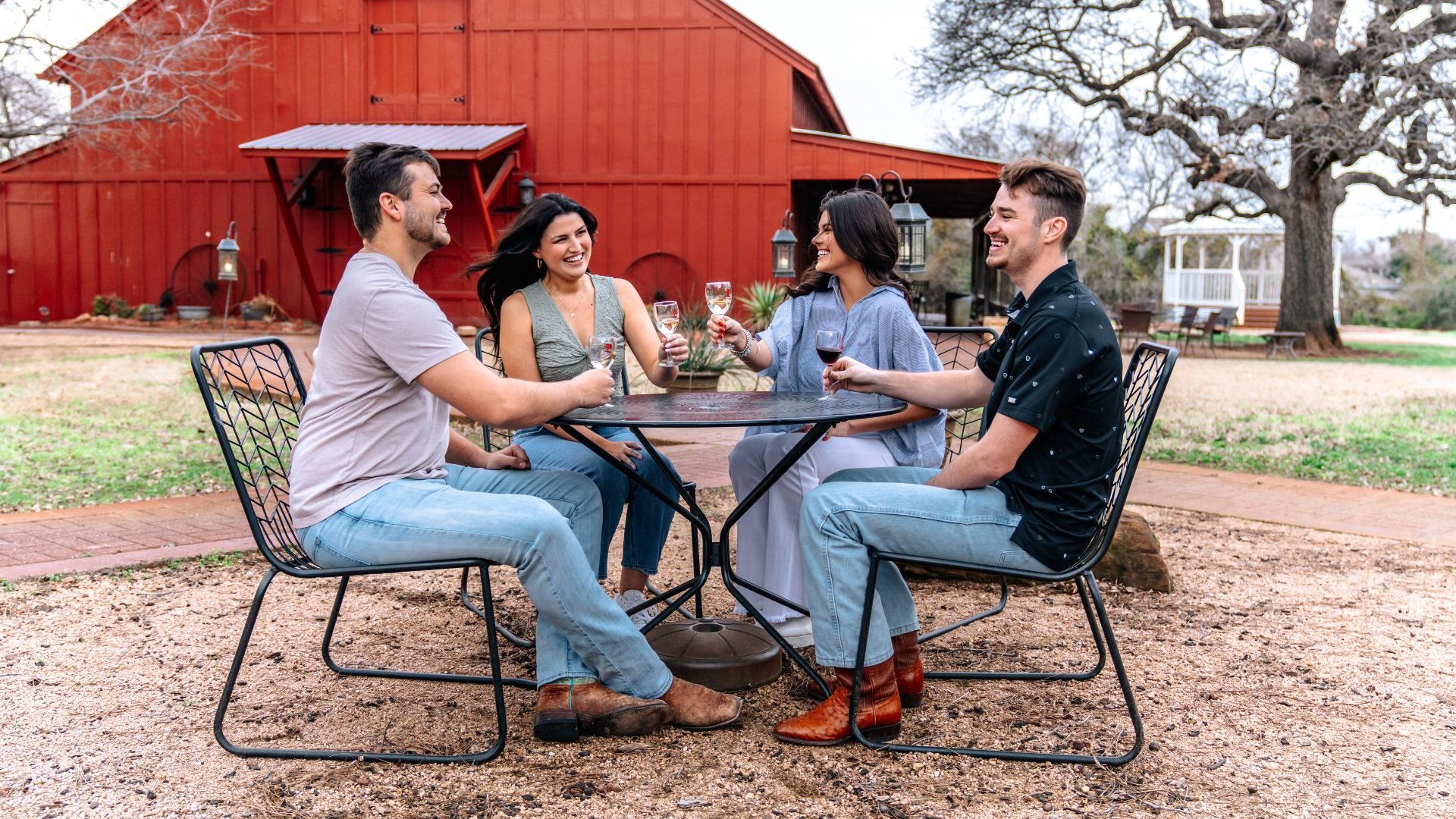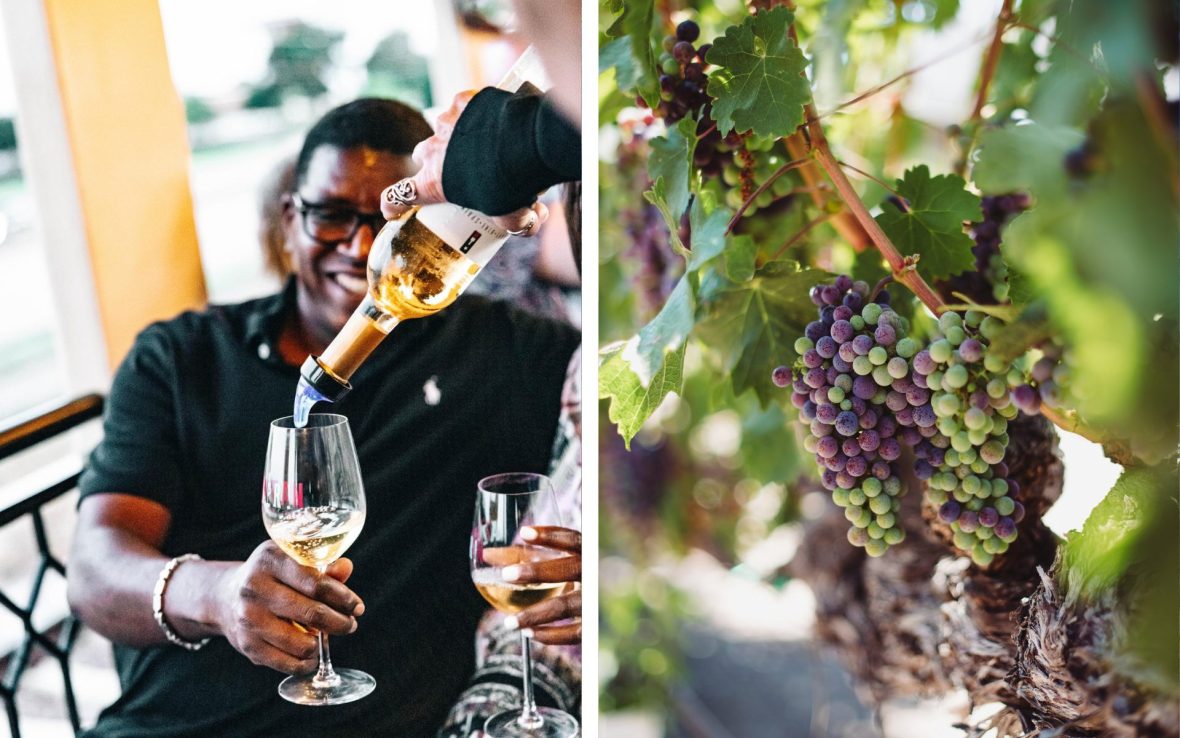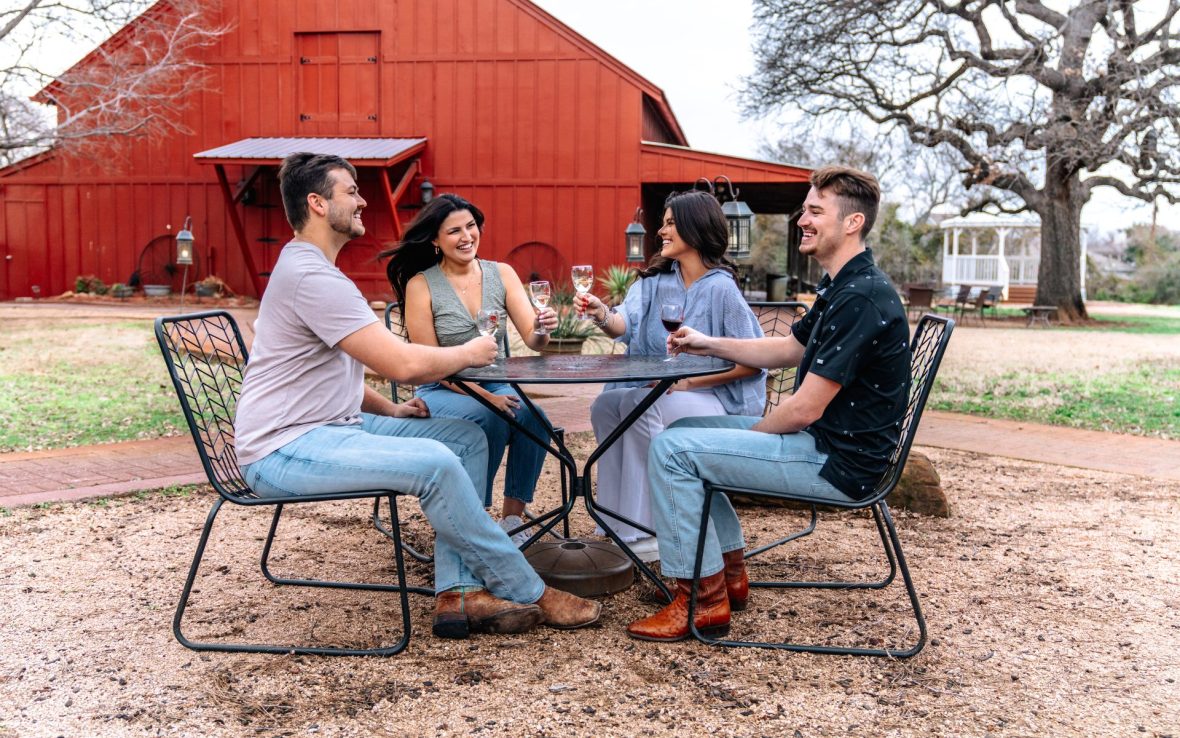
Never heard of Texan wine? Now you have. Here’s all the reasons to keep the historic city of Grapevine and its annual GrapeFest on your travel radar.


Never heard of Texan wine? Now you have. Here’s all the reasons to keep the historic city of Grapevine and its annual GrapeFest on your travel radar.
When you arrive in Grapevine, Texas, you’re not just a tourist. You’re a guest. It’s the southwestern way in southwestern wine country—everyone is invited for a glass of cabernet or two.
And this September, the historic Dallas-adjacent city is opening its cellar doors to an expected 200,000 wine lovers from all over the world. The dress code for the 39th annual GrapeFest wine festival? ‘Grape Gatsby’, of course.
During GrapeFest (which runs from September 11 to 14 this year), Grapevine’s streets will shut down to traffic, playing host to wine booths that stretch on for half a mile, and city shuttles will run wine tasters around town for free. The best part though? You get to be the judge, jury and sommelier, as dozens of Texas wineries compete for your palatable affection during the People’s Choice Awards.
I always thought ‘wine country’ meant Napa Valley, but it turns out Texas is quickly gaining on California. In fact, Texas is now the second-most visited wine destination in the US. So how did this quaint Texan town garner the attention of the international winemaking (and wine loving) community?
Grapevine itself looks much the same today as it did over 150 years ago. Most of the downtown area is protected by a historic preservation ordinance, and it still contains many of its original structures—it’s like a classic Wild West film, the sort with a dramatic shootout in front of a saloon, but with pavement, cars, and electricity added.
Oh, and wine.
The city’s name comes from the wild mustang grape vines, a native vine endemic to southern USA, that used to grow abundantly in the area. Wild mustang is not exactly known for its wine, as the fruit is typically tart, but it’s beloved for making jelly and jam.
I expect him to share some secret wine insider intel, like technical information about tasting notes or the etiquette of spitting. Instead, his advice is extremely simple: “The best wine is the wine that you like”.
Texas is both a newcomer and an old sage when it comes to the American wine industry. One of North America’s first-ever vineyards was planted in Texas by Franciscan priests in the 1660s, but it was a slow-growing industry until the 1960s.
After researchers planted vitis vinifera grapes—one of Europe’s most common varieties—in the High Plains of the Texas panhandle, things started to gain momentum. It became clear that the region was ideal for fostering vineyards: High elevation, strong sun, and fertile soil are the most critical ingredients in any good bottle of wine. And Texas has all this in spades.
In the 70s, parts of the High Plains were recognized as American Viticultural Areas (AVAs), which meant at least 85 percent of the grapes used to make wine were grown locally. Today there are eight designated AVAs in Texas, home to hundreds of vineyards across the state, collectively growing an incredibly diverse range of varietals—from cherry rich tempranillo to smooth merlot and the aromatic viognier.

And while Texan wine might not be a household name at international bottle shops just yet, winery tourism in Texas was a USD half-billion-dollar industry last year, and wine brought in over USD$24 billion in total economic value. The real wine lovers know that Texas is where America’s best vines are at.
And for nearly four decades, Grapevine has been one of the driving forces of the Texan wine industry. Just ask Paul V. and Merrill A. Bonarrigo, who co-founded one of the state’s oldest wineries, Messina Hof.
Paul comes from a long line of winemakers, starting with family who were commercial producers in Sicily before emigrating to the US. He grew up hearing stories of his grandfather making wine in the basement of their Bronx, NY home during Prohibition. His own father made wine at home, too, and Paul wanted to continue the family tradition.
When Messina Hof opened in 1977, there were only a couple of wineries in Texas, and it was tough going. They started out small and were turned down for a bank loan early on, so they grew only as quickly as they were able to self-fund their expansion. The Bonarrigo’s first wines were made from a mobile home, with tanks in their carport that they had repurposed from the dairy industry.
Messina Hof’s current vineyard—they grew out of the mobile home—is situated between Grapevine and Houston, but the winery has several tasting rooms around the state, with Grapevine being its first urban location.
Merrill and Paul were part of the original inspiration for GrapeFest. In 1981, Merril spoke at a conference about the budding Texas wine industry. There, an Australian named P.W. McCallum helped her carry Messina Hof wine from the parking lot. He later became the director of Grapevine’s tourism board, and decided the city could play a role in helping Texas wineries grow.
The first-ever GrapeFest kicked off in 1986, piquing local interest in homegrown wine. Eventually, that momentum turned the city into the perfect urban outpost for wineries statewide to open tasting rooms in its cute, historic Main Street District.
Today, Grapevine is home to over 52,000 people and has become the ‘headquarters’ of Texas wine tasting. And McCallum was recently inducted into the Texas Trail of Fame.
You can even try your feet at the grape stomp contest, which is exactly what it sounds like: A contest to see who can squeeze the most juice out of their grapes during a two-minute stomping session.
Eight wineries, including Messina Hof, have main street Grapevine tasting rooms that form the walkable Urban Wine Trail. It’s a relaxed route which takes cellar-door hopping to a whole new level—you can taste the entire Texas wine list without needing a car.
You can stop for a tasting at Bingham Family Vineyards, whose wine is 100 percent estate-grown in the Texas High Plains AVA. Fun fact, the Bingham family (total of 13!) all play musical instruments, perhaps they’ll do your tasting with a side of trumpet? A few steps away, Landon Winery is the perfect spot to enjoy a bold Texas red blend, like ‘The Texan’, on their outdoor patio. Right next to Landon, Grape Vine Springs Winery hosts music bingo and trivia games as well as a weekly ghost tour of Historic Grapevine.
GrapeFest has become a Grapevine calendar highlight, and the local wine industry and the festival have really grown together. “It’s fabulous for our Texas Wine industry and it’s been a wonderful partnership,” Paul says.
In particular, the People’s Choice Wine Tasting Classic offers the opportunity for meaningful exchange and connection between wine lovers and makers. Everyone who attends a 90-minute tasting session is then able to vote on the best Texan wines at the festival.
Now, I enjoy a glass or two of red every so often, but I’d struggle to tell you the difference between a merlot and a zinfandel without Google’s help. So, I ask Paul for his advice on being a good citizen judge. Is there homework I should do to prepare for GrapeFest?
Paul’s answer surprises me. I expect him to share some secret wine insider intel, like technical information about tasting notes or the etiquette of spitting. Instead, his advice is extremely simple: “The best wine is the wine that you like.”
“The importance of the People’s Choice is that these are the people who actually buy the wine,” says Paul. “So, their opinions are very, very important to a winemaker, because they’re the ones that are buying the wine day in and day out. So you know it has to hit the right kind of taste profile for them to score it high.”

However, if you do want a bit more expertise to back up your votes, rest assured—you’ll be able to meet winemakers at the festival, and attend classes on the art and science of vinification. You can even try your feet at the grape stomp contest, which is exactly what it sounds like: A contest to see who can squeeze the most juice out of their grapes during a two-minute stomping session.
“People are cheering in the crowd and there are grapes flying everywhere. The juice is flowing. It’s just so much fun,” Elizabeth Shrack, communications director for Grapevine’s Convention and Visitors Bureau, tells me.
“What’s fun is you can be a total wine amateur at GrapeFest, and you’ll meet experts who will make it very accessible for you,” she says. “Winemakers want people to enjoy wine just like they do. So, they’re meeting you where you’re at, and helping you along the way.”
In other words, whether you consider yourself an experienced or an amateur sommelier, your opinion matters in Grapevine. And who knows? Your palate might just influence the next top Texan wine.
**
You can learn more about Grapevine and GrapeFest here.
****
A note on partnership content:
Adventure.com acknowledges the complexity and challenges of travel in the context of our global climate crisis. This article is part of Adventure.com’s paid partnerships program, which enables us to continue publishing stories about a more regenerative and sustainable future of travel by helping to make out platform commercially viable. Adventure.com only partners with brands and products that align with our ethical and editorial standards, and our vision for a future of travel built around lower emissions, deeper connection and more resilient communities.

Kassondra Cloos is a travel journalist from Rhode Island living in London, and Adventure.com's news and gear writer. Her work focuses on slow travel, urban outdoor spaces and human-powered adventure. She has written about kayaking across Scotland, dog sledding in Sweden and road tripping around Mexico. Her latest work appears in The Guardian, Backpacker and Outside, and she is currently section-hiking the 2,795-mile England Coast Path.








Can't find what you're looking for? Try using these tags: